
Exploring Modern Designs in Contemporary Persian Carpets
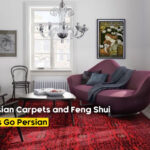
How Persian Carpets Enhance Feng Shui in Your Home
Persian carpets are celebrated not only for their beauty and craftsmanship but also for their deep symbolic meanings. Each pattern and motif woven into these carpets holds significance, reflecting the culture, religion, and traditions of Persian society. For centuries, Persian weavers have used these symbols to tell stories, express beliefs, and create visual connections to nature, spirituality, and life. In this blog post, we will explore the symbolism behind the most common patterns found in Persian carpets, offering insight into the rich heritage that each design represents.

The Symbolism Behind Patterns in Persian Carpets
1. The Medallion: Symbol of the Universe
Central Medallions in Persian Carpets
The medallion is one of the most iconic and recognizable motifs in Persian carpets. Typically located in the center of the carpet, the medallion often resembles a sunburst or a star, radiating outwards and symbolizing the universe or the cosmos.
- Cosmic Symbolism: In Persian culture, the medallion is often seen as a representation of the heavens or divine power, connecting the earthly with the spiritual. The central position of the medallion reflects the idea that all elements in the universe revolve around a central force, often interpreted as the sun or divine presence.
- Balance and Harmony: Medallions are typically surrounded by symmetrical patterns, which represent the Persian belief in balance and harmony in both the cosmos and life.
Variations of Medallions
- Star Medallion: A symbol of spiritual enlightenment, star medallions often represent guidance and divine knowledge.
- Circular Medallion: Circular medallions represent eternity and perfection, symbolizing the unbroken cycle of life.
2. Garden Patterns: The Symbolism of Paradise
The Persian Garden in Carpets
Garden designs in Persian carpets are symbolic representations of the Garden of Paradise, a concept that is deeply rooted in Persian culture and Islamic tradition. Known as Golestan or Bagh, these designs often feature lush greenery, blooming flowers, flowing water, and majestic trees, all symbolizing eternal paradise.
- Floral Motifs: Flowers such as the rose, lotus, and tulip often represent beauty, rebirth, and spiritual purity. The lotus, in particular, symbolizes enlightenment and eternal life.
- Cypress Tree: The cypress tree, commonly found in Persian garden carpets, symbolizes immortality and everlasting life. In Persian poetry and literature, the cypress is often associated with strength and resilience.
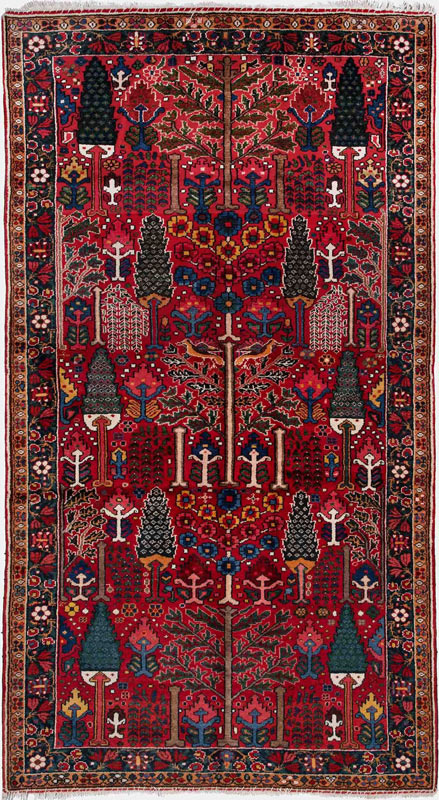
Floral & Garden Pattern
Symbolism of Water
Water, frequently depicted in garden carpets, symbolizes purity, life, and spiritual renewal. Flowing streams or fountains are used to represent the flow of life and the path to paradise. The recurring presence of water is a reflection of Persian gardens, which were meticulously designed to include water features as a symbol of tranquility and abundance.
3. Geometric Patterns: Tribal Heritage and Protection
Tribal Motifs in Persian Carpets
Geometric patterns are prevalent in Persian carpets, particularly those woven by nomadic tribes such as the Qashqai, Baluchi, and Turkmen. These designs, often simplistic yet bold, have deep-rooted connections to tribal identity and are thought to offer protection from evil.
- Diamond Shapes: Diamonds are commonly found in tribal carpets and are thought to represent the eye, a symbol of protection against evil. These patterns were often woven into carpets to ward off negative energies and bring good fortune.
- Stars and Hexagons: Geometric shapes like stars and hexagons symbolize spiritual protection and divine order. In tribal carpets, these shapes often reflect cosmic patterns and are thought to bring blessings from the heavens.
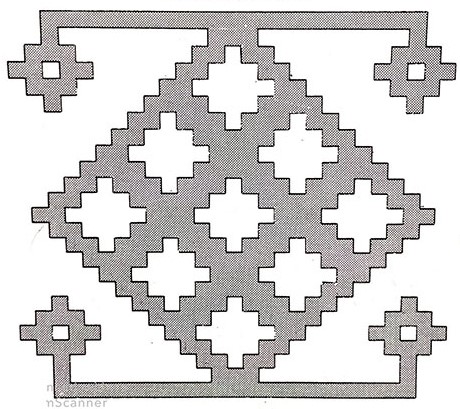
Star Medallion
Symbolism of Repetition
In geometric designs, patterns are often repeated across the entire carpet. This repetition reflects the nomadic weavers’ belief in the cyclic nature of life and the endless cycles of the universe. It also serves to create a sense of unity and completeness, symbolizing harmony between humans and the natural world.
4. Animal Motifs: Strength, Wisdom, and Protection
Lions: Power and Royalty
Lions are a recurring motif in Persian carpets, symbolizing strength, power, and royalty. Historically, lions have been associated with Persian kingship, often seen as protectors of the throne.
- Symbol of Authority: Lions in Persian carpets are often depicted in battle scenes or standing majestically, representing courage and leadership. Their presence is meant to convey the power and authority of the carpet’s owner.
- Spiritual Protection: In addition to their association with royalty, lions are believed to offer spiritual protection and safeguard the home from harm.
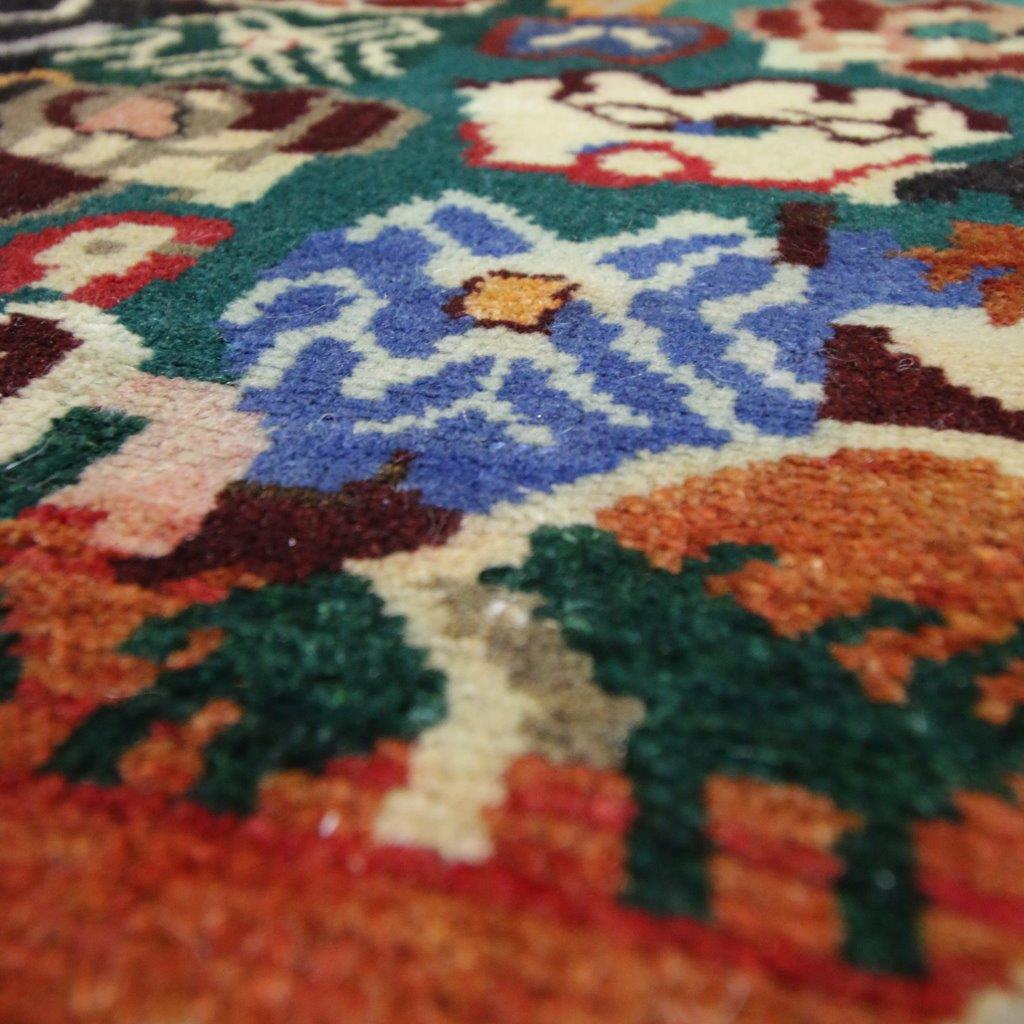
Old four-meter hand-woven carpet, Fara-denbe model, side design, code 4103309
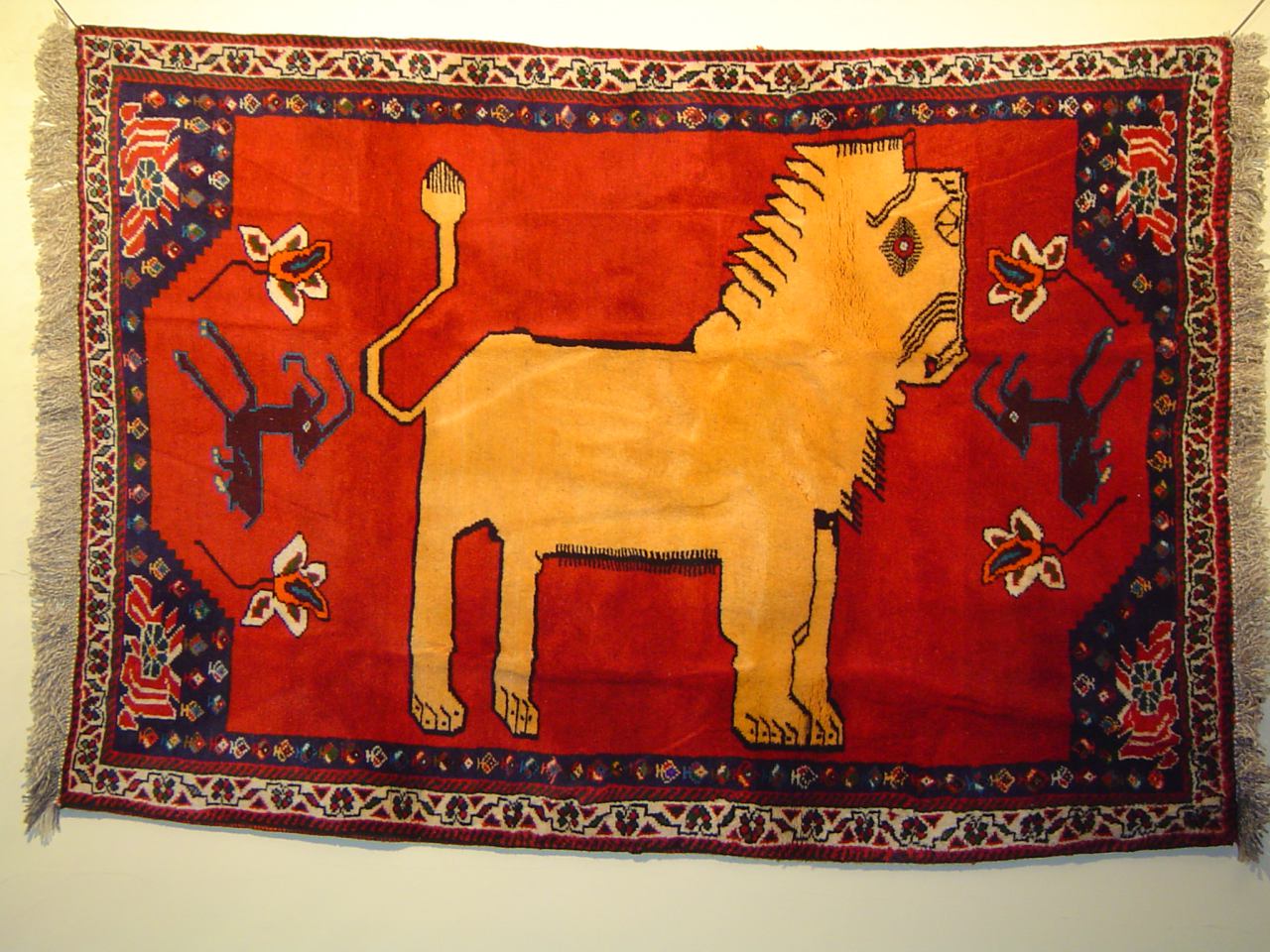
Animal Motifs
Birds: Freedom and Love
Birds, particularly peacocks, nightingales, and pigeons, are often used in Persian carpet designs to symbolize freedom, love, and spiritual transcendence.
- Peacock: The peacock is considered a symbol of beauty, immortality, and paradise. Its intricate feathers are often reflected in the detailed patterns of Persian carpets.
- Nightingale: In Persian literature and poetry, the nightingale is the symbol of love and longing, often used to represent the lover’s unfulfilled desires.
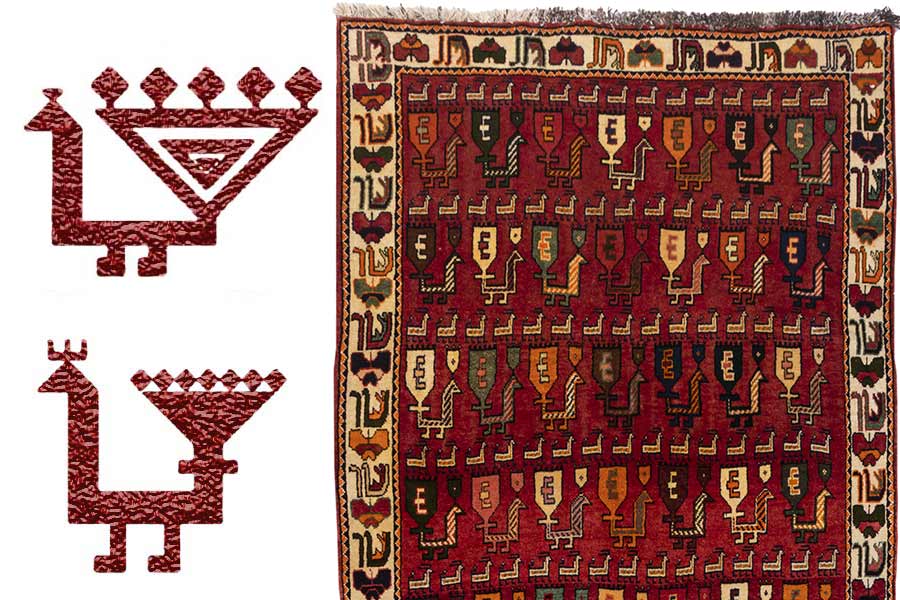
Peacock motifs on the carpet
Mythical Creatures: Simurgh and Dragons
Mythical creatures like the Simurgh (a legendary bird) and dragons appear in Persian carpets as symbols of wisdom, healing, and protection.
- Simurgh: The Simurgh is a benevolent, mythical bird that is believed to bring healing and prosperity. It is often depicted as a protector of the innocent and is a symbol of divine knowledge.
- Dragon: The dragon represents power and spiritual strength. It is often woven into carpets to symbolize the battle between good and evil.
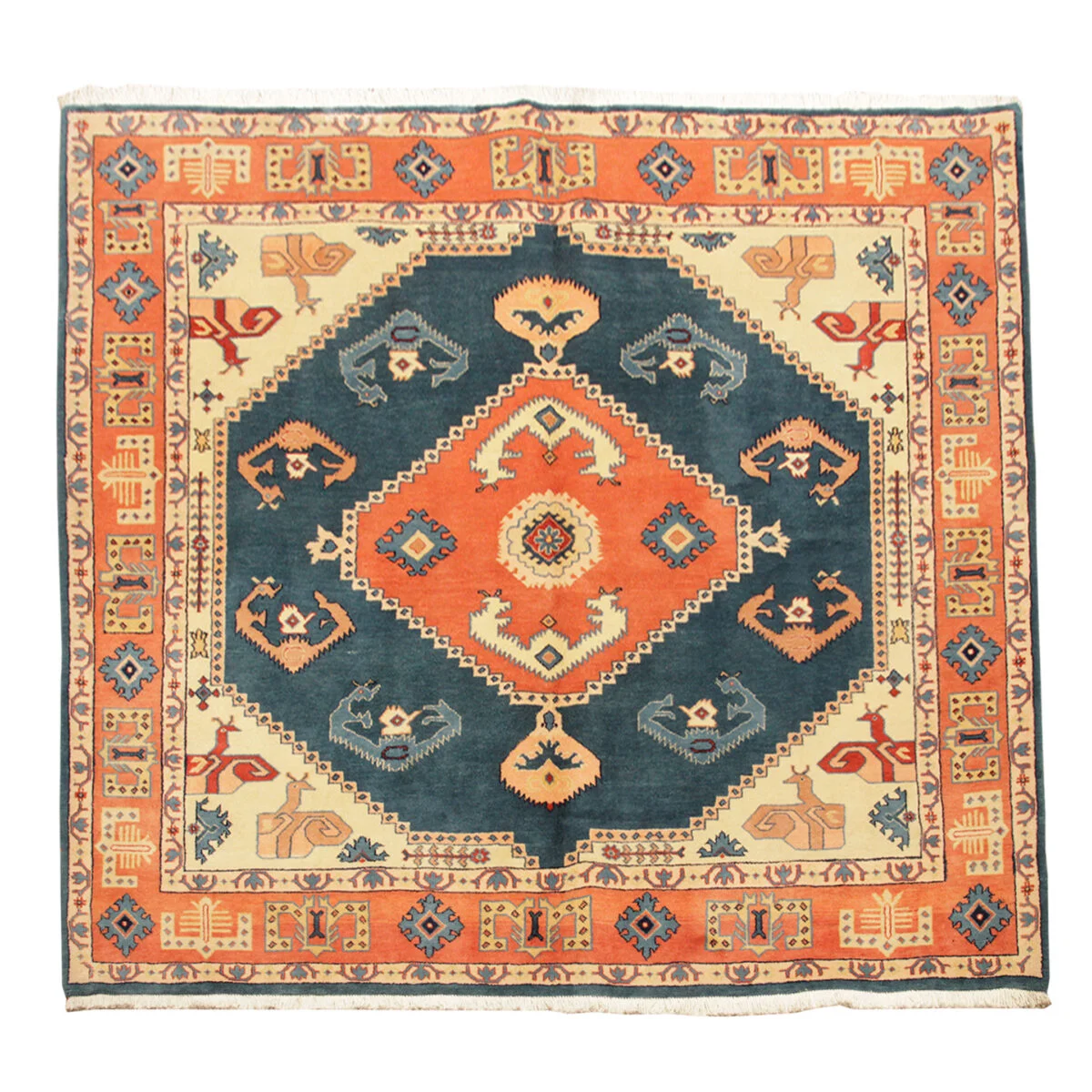
Dragon in the carpet
5. Herati Pattern: Symbol of Water and Fertility
The Origin and Meaning of the Herati Design
The Herati pattern is one of the most commonly used motifs in Persian carpets, particularly in the regions of Tabriz, Mashhad, and Herat. This design typically consists of a diamond shape with a flower or rosette in the center, surrounded by leaves or fish-like figures.
- Symbol of Water: The fish figures in the Herati pattern symbolize water, which in Persian culture is associated with life, fertility, and abundance. The recurring fish motifs are often seen as representations of prosperity and good fortune.
- Balance and Symmetry: The arrangement of elements in the Herati pattern reflects the Persian love for balance and symmetry, symbolizing harmony between nature and mankind.
6. Boteh (Paisley): Fertility and Eternity
The Boteh as a Symbol of Life and Eternity
The Boteh (also known as Paisley) is one of the most well-known motifs in Persian carpets, symbolizing fertility, eternity, and life. This motif, resembling a teardrop or flame, is thought to represent the cypress tree, a symbol of resilience and immortality.
- Cultural Significance: The Boteh motif has roots in Zoroastrian symbolism, where it was believed to represent the flame of life or eternal fire. Over time, it has evolved into a symbol of continuous renewal and infinite growth.
- Adaptability: The Boteh design can be found in a variety of sizes and orientations in Persian carpets, often used to fill the borders or the background of a carpet. Its adaptability symbolizes the ever-changing yet eternal nature of life.
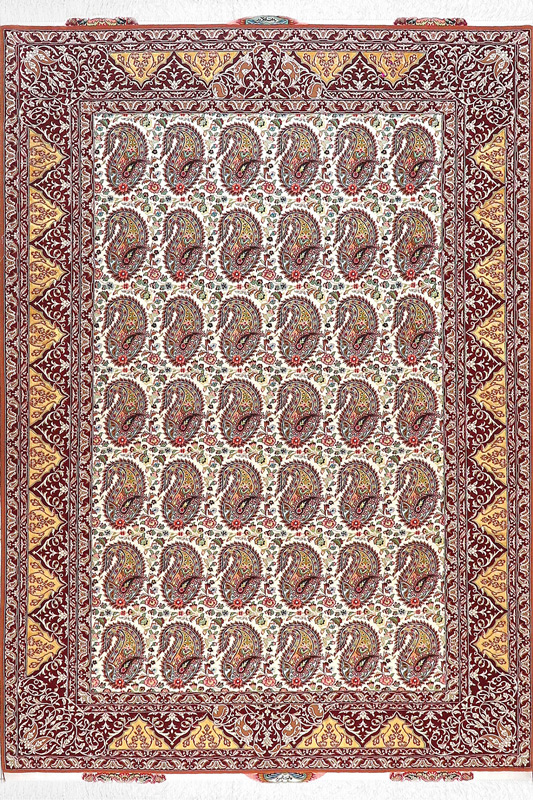
Boteh (Paisley)
7. Mihrab: The Prayer Niche
Religious and Spiritual Significance of the Mihrab
In Persian prayer rugs, the Mihrab design is a significant motif, representing the prayer niche in a mosque that points toward Mecca. This design is often an arched shape that symbolizes a doorway or gateway to the divine.
- Connection to the Divine: The Mihrab motif is a reminder of the sacred connection between the individual and the divine. Carpets with this design are often used for religious purposes, helping believers to focus their prayers and meditation.
- Lamp Symbolism: In many prayer rugs, a hanging lamp or lantern is placed within the Mihrab, symbolizing the light of knowledge and spiritual enlightenment.
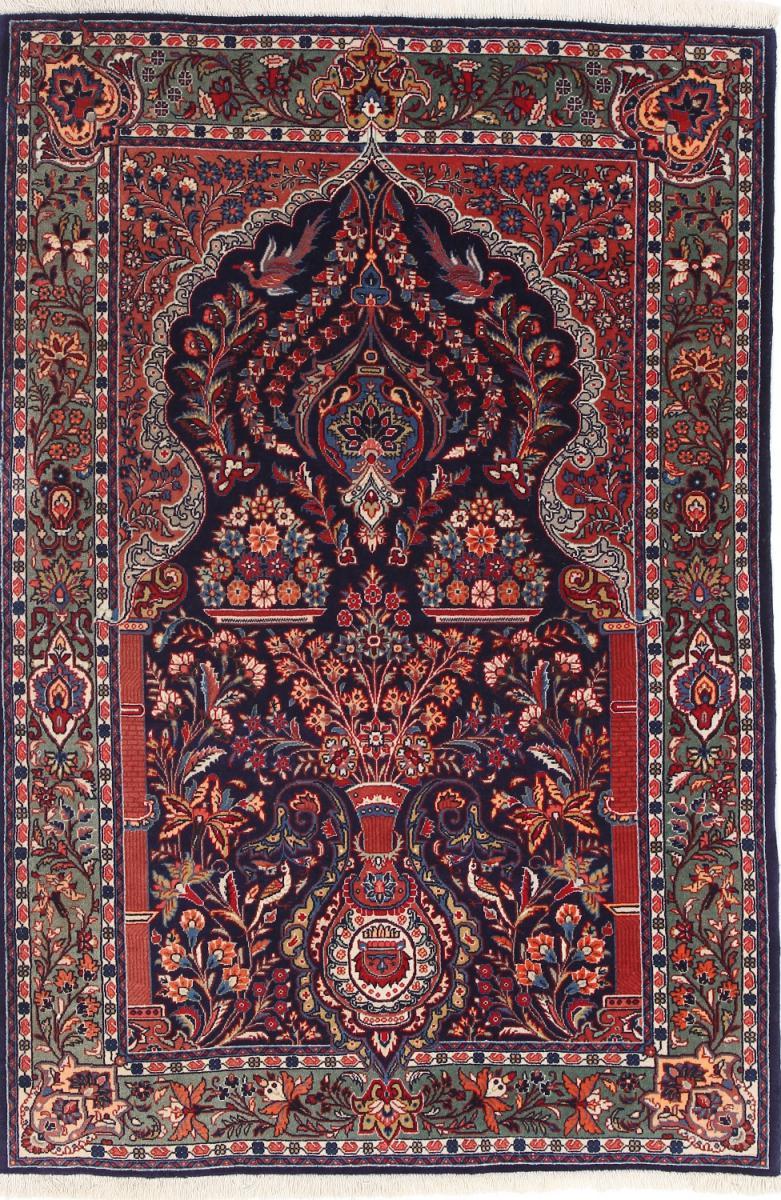
Weaving as a Mystical Process
Conclusion
The patterns in Persian carpets are more than just decorative elements; they are deeply rooted in Persian culture, spirituality, and philosophy. From medallions symbolizing the universe to tribal motifs offering protection, each design carries with it centuries of meaning and tradition. Understanding the symbolism behind these patterns allows us to appreciate the artistry and cultural significance woven into every carpet, making each one a reflection of Persian history, beliefs, and values. Persian carpets are not only works of art but also stories, spiritual journeys, and cultural expressions, all captured in wool, silk, and thread.



















